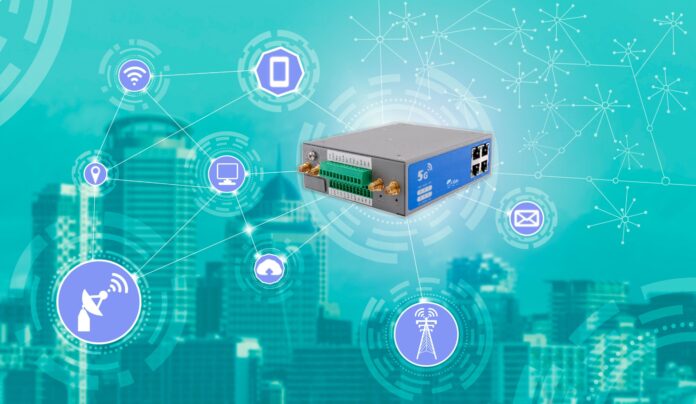
Some 5G routing products in the industry have wired WAN uplink, and can also go uplink through a 5G cellular network, so the device has two data channels connected to the external network.
However, most manufacturers do not enable wired and 5G to be online at the same time and do not transmit data traffic at the same time. They only have single-line transmission, that is, no load sharing.
Many 5G channels only serve as backup functions, and only switch to 5G channels to transmit data when the cable fails, and there will be short-term network interruptions during the switching process. This research scheme can realize the simultaneous operation of wired and 5G, realize the load sharing of business traffic, and give full play to the role of 5G.
With the accelerated construction and deployment of 5G base stations by operators, the current 5G basic equipment is basically mature, and it is urgent for us to develop a large number of applications based on 5G services. 5G technology is a revolutionary new generation of network technology. Its design concept is directly close to the needs of users.
It no longer just provides high-speed Internet access. Users can also customize their own network requirements on UPF. , smart cities, and other fields are blooming in a new light. As one of the earliest 5G product design companies, Hunan Tianguan Electronic Information Technology Co., Ltd. has been constantly exploring the application of 5G business scenarios around the three major characteristics of 5G, eMBB, uRLLC, and mMTC, and has maintained in-depth cooperation with operators.
For communication and communication, our company has developed a variety of 5G routers, 5G-CPE, 5GDTU, 5G image transmission equipment, 5G serial gateways, and other equipment, which are used in different fields.
5G router technology background
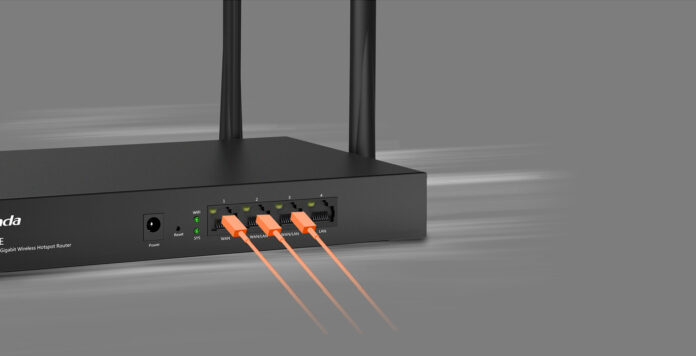
The 5G routing products currently on the market do not implement wired WAN and 5G cellular traffic load sharing or do not implement a better sharing method.
In most cases, the default is to use the wired WAN port for data transmission with the external network, and the 5G channel is only used as a backup.
With the promotion of 5G-related package services for enterprises, 5G’s high bandwidth, low latency, and multi-connection features have obvious advantages over traditional wired communications. Therefore, many users hope to use 5G and wired transmission channels at the same time.
For example data with high real-time requirements go through 5G channels, and data with low real-time requirements go through wired channels.
5G Router Network Model
Enterprises define video conferencing and IP phones as high real-time communication terminals and PCs and wireless APs as terminals with lower real-time requirements. Through the 5G router of this research, the high real-time terminal data can go through the 5G channel, ensuring low delay and high reliability of high real-time terminal data transmission.
Other terminal data with low real-time requirements go through wired channels. In addition, the internal network realizes the isolation of high real-time terminal data and low real-time terminal data.
Load Sharing Method
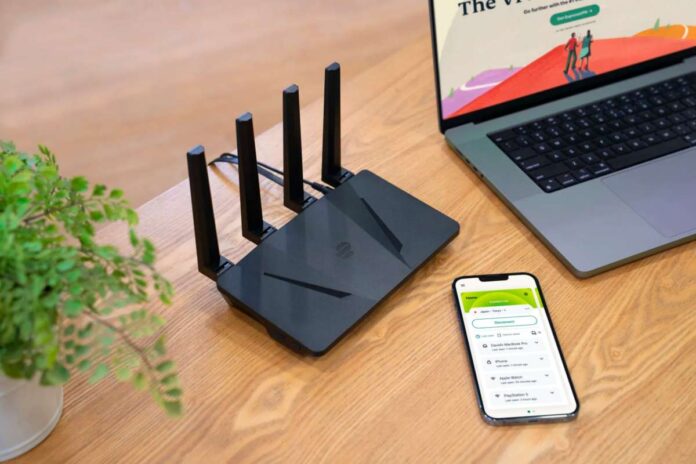
The main reason why 5G routers need to add policies to achieve load sharing is that the router has only one routing protocol stack and one routing table. Generally speaking, if you need to access the external network, you need to configure a default route to point to the router’s external network interface (WAN port).
If there are multiple external network interfaces, the destination IP address accessed by the end user is reachable from any external network interface, and the next hop of the default route (the gateway address of the external network interface) is fixed, so only one fixed line will be selected to access the external network, so other external network lines will be idle, resulting in underutilization of resources.
First, divide the ports connected with high real-time terminal equipment into the same VLAN on the switch, such as the video conference and ip phone in Figure 1 above, and divide them into VLAN2. Divide other terminals with lower real-time requirements into another VLAN, such as PCs and wireless APs in Figure 1 above, and divide them into VLAN1. The method of classifying VLANs can be based on ports or MAC addresses of terminal devices.
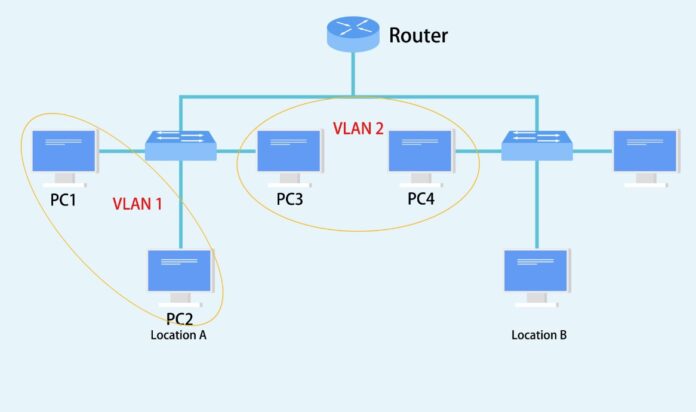
Each Layer 2 switch (click here) is connected to the 5G router through a network cable, or two ports with two network cables. If a network cable is connected, the message sent by the Layer 2 switch to the 5G router needs to carry the 802.1Q frame header to carry the VLAN information to the 5G router. If two network cables and two ports are connected, the default VLAN configuration of the ports connected at both ends of the device should be the same, so that the port connected to the Layer 2 switch and the 5G router does not need to carry the 802.1Q frame header when sending packets. As shown in Figure 1 above, the 5G router also needs to be configured with the corresponding VLAN1 and VLAN2, which must be consistent with the VLAN configuration of the Layer 2 switch.
The 5G router creates the corresponding dhcp-server according to the number of created VLANs, as shown in Figure 1 above, dhcp-server1 is bound to VLAN1, and DHCP-server2 is bound to VLAN2. That is, all terminal devices under VLAN1 are in the same network segment A, and the IP address is allocated by DHCP-server1, and the IP address of the internal network side of the 5G router VLAN1 is on the same network segment as the terminal device, and serves as the gateway of the terminal device under VLAN1. All terminal devices under VLAN2 are in the same network segment B, and the IP address is allocated by DHCP-server2. The IP address of the 5G router VLAN2 intranet side and the terminal device are on the same network segment, and it is used as the gateway of the terminal device under VLAN2.
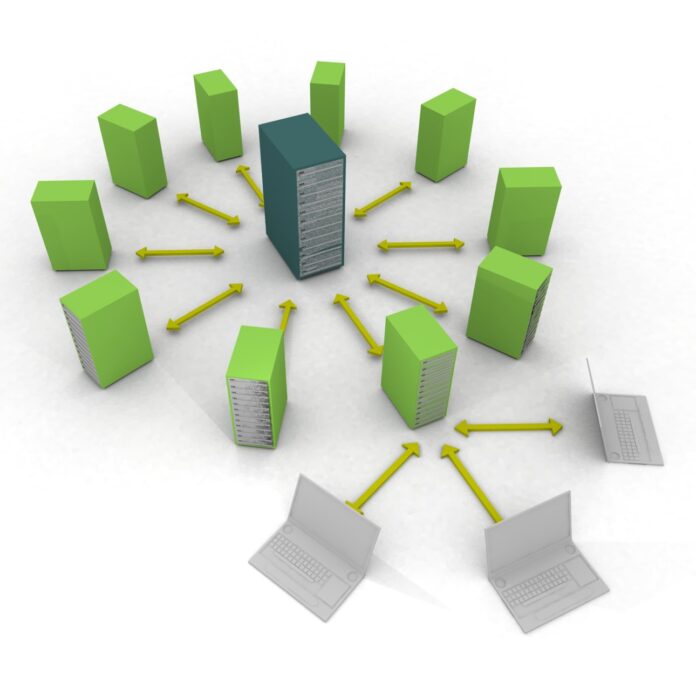
The configuration of the above VLANs is not limited to only configuring 2 VLANs, nor is it limited to configuring VLAN1 or VLAN2. The dhcp-server configuration is not limited to configuring only 2, nor is it limited to configuring dhcp-server1 or dhcp-server2. It can be flexibly configured according to user needs.
The 5G router determines whether the packet forwarding egress of terminal devices under VLAN1 and VLAN2 is wired or 5G by creating policy routing. If the system detects that both the wired and 5G networks are normal, the 5G router formulates a policy based on the source IP address being the address of the B network segment under VLAN1, and the routing egress is the 5G interface, which is forwarded through the 5G cellular network 1.
The system’s default route exit is the wired WAN interface, and network segment A defaults to the wired interface. The configuration policy route has a higher priority than the default route. If there are other network segments and the device has multiple 5G cards, it can be forwarded to the corresponding 5G cellular network by adding other strategies, such as 5G cellular network 2 in Figure 1 above, to achieve load sharing and ensure smooth and real-time data flow.
If the 5G routing system detects a network failure on a certain line during network use, the 5G router will automatically modify the routing exit of the policy routing to another line, so that the network segment that fails can be restored immediately. If the system detects that the original line has been restored, the 5G router will automatically switch the corresponding network segment back to the original line.

Summarize
Through this research, wired and 5G can be online at the same time, and data traffic can be transmitted at the same time, realizing the real sense of traffic sharing according to user needs. This technology can improve users’ surfing fluency, bring a better experience, and better enhance network backup capability.
Through this technology combined with user needs and reasonable configuration, the value of 5G can be better reflected, and high real-time data and low real-time data can be shunted and isolated from each other, which further ensures data security and improves work efficiency, enhancing user experience.





